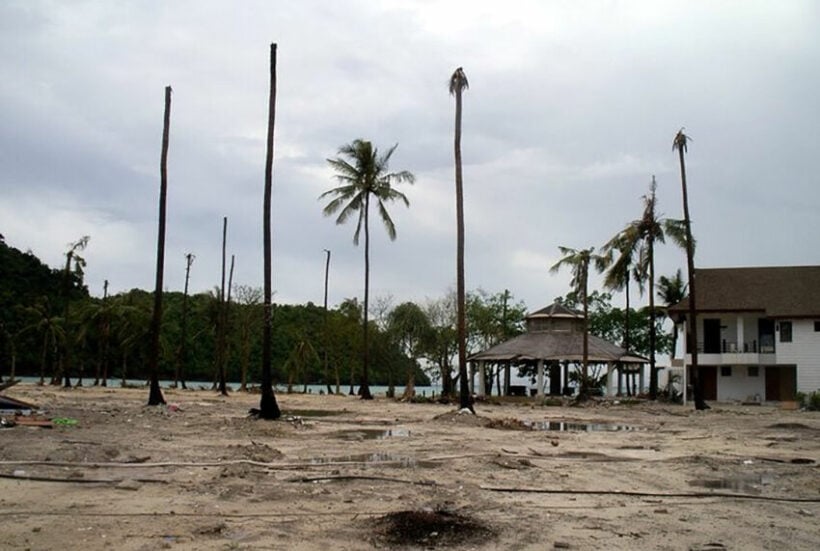Phuket remembers anniversary of Indian Ocean Tsunami

Today marks the anniversary of one of the deadliest natural disasters ever to befall mankind. The Indian Ocean Tsunami, also known as The Boxing Day Tsunami, struck Phuket and the surrounding areas at 10am on December 26, 2004. In the province and neighbouring provinces, religious ceremonies were held today to mark the 18th anniversary of the deadly tsunami.
Religious ceremonies for Buddhists, Islamic people, and Christians alike took place in Thalang district in Phuket. The Mai Khao Cemetery hosted religious rights where mourners placed wreaths made of white roses at the foot of a memorial wall. The wall has a list of names of identified victims hailing from 45 different countries who lost their lives that day. Participants came to make merit and join in a one-minute silence in honor of those who died.
A similar event to remember the catastrophic tsunami was held on the island of Koh Phi Phi in Krabi province just to the south of Phuket. The Phi Phi Harbour View Hotel hosted a commemoration event with locals as well as domestic and foreign tourists. They were joined by local business operators and government officials to mourn the losses from the tsunami 18 years ago.
Similarly to Phuket, flowers were laid while religious ceremonies were held. The flowers were placed in front of photographs of people who died during the tsunami. But about two kilometres off the coast of the island, a unique undersea monument was previously built to commemorate the tsunami. The landmark has now become a popular learning site for divers in training.
Scuba divers took a garland made out of stainless steel and placed it at the monument on the ocean floor to mark the 18th anniversary.
A powerful magnitude 9.1 underwater earthquake rumbled off the coast of northern coast of Sumatra island, Indonesia, at 7.59am local time, as it ruptured a 1,500-kilometre stretch of fault line where the Indian and Australian tectonic plates meet. It set off a series of underwater shockwaves that would eventually be felt around the entire rim of the Indian Ocean.
Within 20 minutes of the earthquake, the first of several 22 to 33 metre high waves hit the shoreline of Banda Aceh, killing over 100,000 people. Then, in succession, waves rolled over coastlines in Thailand, India and Sri Lanka, killing tens of thousands more. Eight hours later and 8,000 kilometres from its Asian epicentre, the tsunami claimed its final casualties on the coast of South Africa. In all, 230,000 – 250,000 people died or were never found, making it one of the deadliest natural disasters in recorded history.
Latest Thailand News
Follow The Thaiger on Google News:


























